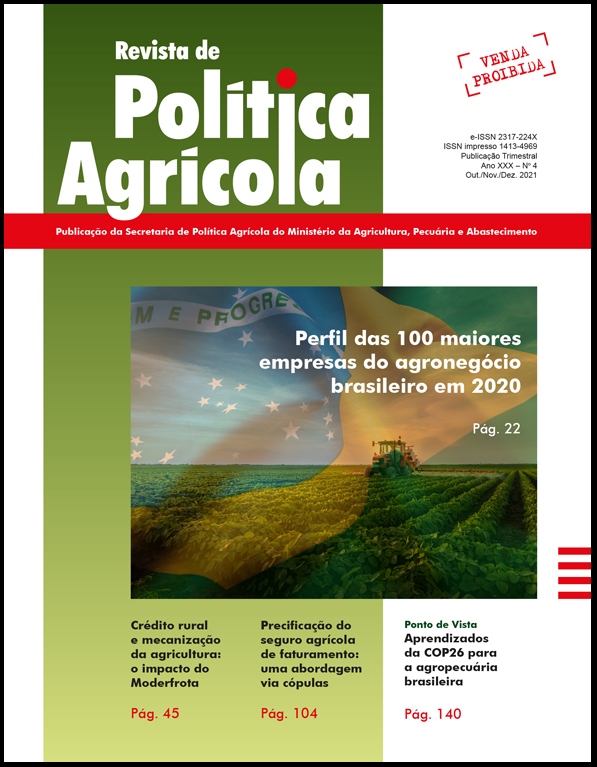Comércio da soja argentina: mercado disponível vs mercado futuro
Palavras-chave:
agronegócio, preços, produtores agrícolasResumo
O tomador de decisão sobre a produção agrícola precisa, cada vez mais, monitorar a evolução dos preços do mercado, desde o início do plantio até o momento da colheita e estoque do produto. Duas lógicas podem ser consideradas: a do produtor que leva em conta a existência do mercado a termo; e a do produtor que não considera esse tipo de mercado. O objetivo geral deste trabalho é analisar a estratégia comercial baseada em preços. Os objetivos específicos são: saber, para a soja, qual foi a evolução dos preços desde o momento da semeadura até o da colheita nos últimos 25 anos e verificar se uma estratégia simples de atuar no mercado futuro foi positiva na comparação com os preços disponíveis. A conclusão é que nos últimos 25 anos o uso de uma estratégia de hedge simples operado nos mercados a termo, a venda de contratos futuros na época do plantio, não foi benéfica. Operar no mercado futuro não foi conveniente em 16 dos 25 anos analisados (64%). No período analisado, o melhor preço de colheita foi obtido no mercado disponível, ou seja, sem esse tipo de cobertura simples.Downloads
Publicado
2021-12-30
Como Citar
Leavy, S., Allen, B., Padilha, A. C. M., & Czarnobai, V. (2021). Comércio da soja argentina: mercado disponível vs mercado futuro. Revista De Política Agrícola, 30(4), 94. Recuperado de https://rpa.sede.embrapa.br/RPA/article/view/1522
Edição
Seção
Artigos Científicos


